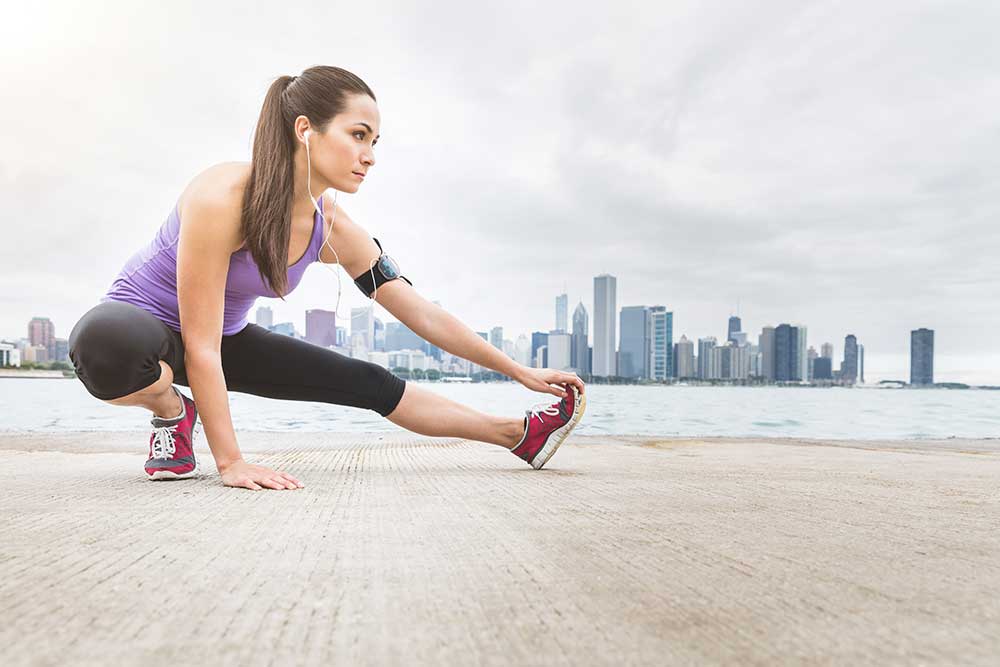There is perhaps no more prominent openly contentious subject in medicine than the question of whether stretching is actually helpful to the body before exercise. This article explores the basic cases for and against stretching.
The Case for Stretching
The University of California, Davis (UC Davis) Student Health & Counseling Services and the Mayo Clinic list these six physical positives of stretching:
- Greater Flexibility – With a more flexible body, you are less stiff and can more comfortably run and jump. Flexibility is key to injury prevention.
- Broader Range of Motion in Your Joints – Range of motion (ROM) is the amount of movement you have available, critical to quality of life.
- More Blood and, in Turn, More Nutrients – Blood flow and other circulation will get better in an area of the body that you stretch. That better circulation of fluids is an indicator that you have access to more nutrients, as well as better elimination of toxins and other waste.
- More Optimal Muscular Functioning – With better nutrients to power the muscles, they perform at a higher level.
- Lower Likelihood of Injury – You reduce your risk of hurting yourself during a workout if you get your muscles prepared. “When your muscles are warm and stretched,” notes UC Davis, “movement becomes easier and more fluid-like, which helps with injury prevention.”
- Better Posture – You may think that achieving better posture is simply about reminding yourself not to slouch. Actually, posture is the positioning of your body, which can naturally be improved through stretching.
Specific mental health benefits of stretching mentioned by UC Davis include:
- Greater Sense of Calm – You can breathe deeply and relax while stretching; and with each stretch comes a release. A sense of peace will come over you as you introduce better circulation and nutrient flow throughout your body.
- Looser Muscles – If you experience a lot of stress or anxiety, it is very likely that you “carry stress,” as UC Davis explains. Our muscles will tighten if they are subjected to too much pressure, as a tactic that is intended to protect but is often overdefensive. Stretching helps you relax by loosening those muscles where stress is built into your structure.
- More Energy – You get more energy as a result of the nutrients that come with a better influx of blood. You will feel fresh and invigorated.
The Case Against Stretching
Despite those commonly understood benefits of stretching, there is evidence against its real value. For instance, the Cochrane Collaboration has repeatedly looked at the amount of muscle soreness experienced after exercise by stretchers and non-stretchers. A review the nonprofit published in 2011 was relatively extensive, with one study of more than 2000 participants and a dozen smaller ones. The authors found that stretching “provided little, or no, reduction in muscle soreness experienced” as much as a week following exercise.
A study by USA Track & Field, published in August 2010, had similar findings. The clinical trial conducted by the federal agency studied 3000 runners. Some stretched and some did not. The people who were in the stretching and non-stretching groups both had the same risk of injury, 16 percent.
Conclusion
Stretching may not be as effective at injury prevention or pain relief as we had thought. However, given its mental positives, the practice is probably still worthwhile.
Do you have an injury now and need to recover quickly? At OrthoGen, we lead modern joint treatments away from invasive surgeries and into the new frontier of stem cell therapies. See our story.

